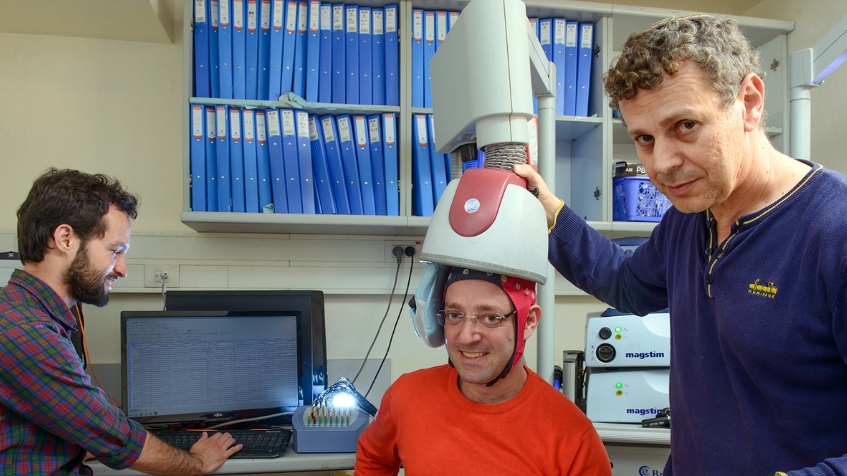Significant progress towards personalized medicine in the field of psychiatry, with the help of a helmet that induces electromagnetic stimulation of the brain.

About two years ago, the US Food and Drug Administration approved the use of transcranial electromagnetic stimulation to help people quit smoking. The FDA based its decision on the research work of Prof. Avraham Tsangan from the Department of Life Sciences at Ben-Gurion University of the Negev. An article on the subject was published these days inThe prestigious journal NATURE, following on from Prof. Tsangan's more advanced research that deals with personalization of this type of treatment, based on the patient's clinical and electrophysiological characteristics.
Deep transcranial magnetic stimulation (Deep rTMS) is a technology developed by Prof. Tsangan and the research team in his laboratory. The system uses coils that produce electromagnetic fields and these affect activity in brain areas involved in various diseases. In the last decade, specific Deep rTMS coils were approved by the FDA for the treatment of clinical depression, obsessive-compulsive disorder (OCD) and recently a coil was also approved against smoking addiction.
Prof. Tsangan's research which was recently published in the journal JCI Insight Shows that it is possible to adjust the focus of brain stimulation to treat different patients suffering from clinical depression, based on the personal characteristics of the specific patient (measured by a standard clinical questionnaire), and on the basis of the brain activity of the specific patient, measured with the help of an electroencephalogram (EEG).

The study involving heavy smokers used a coil developed to treat addictions. The treatment lasts several weeks, and its side effects are mild and transient. The results of the study showed that those who received real treatment, compared to those who received sham treatment, reported a higher percentage of smoking cessation (reports that were confirmed by urine tests), as well as a greater decrease in craving for cigarettes, which lasted at least three months after End of treatment.
Senior researchers in the field have responded to this important development. Prof. Michael Fox from Harvard University Medical School wrote: "Focusing on the brain circuits responsible for symptoms has been shown to be valuable for the treatment of a variety of brain disorders, and we are optimistic about the possibility that the treatment will benefit patients with addiction."
The article also reviews the logic behind the choice of the various parameters of the stimulation, such as the brain areas on which the treatment is directed, and emphasizes the importance of additional parameters (the frequency and intensity of the stimulation, the duration of the stimulation, the number of therapeutic sessions, etc.) which can affect the results. The technology is already being used to help some people quit smoking, and for those for whom the treatment works, the benefits are significant, the paper says.
As mentioned, the article published in NATURE reviews Prof. Tsangan's work from his first study that proved that brain stimulation in rats can reduce drug-seeking behavior, to the clinical research that led the US Food and Drug Administration (FDA) to approve the use of repetitive transcranial magnetic stimulation Deep rTMS to help people quit smoking.
More of the topic in Hayadan:
- Beyond symptoms / Ferris Jaber
- "Improve human well-being and extend human life"
- The Helsinki Committee approved an experiment with Brainsway's device for the treatment of addiction to drugs based on the cannabis plant (hashish and marijuana)
- The mathematics of depression
- How does the corona virus affect diabetics?
